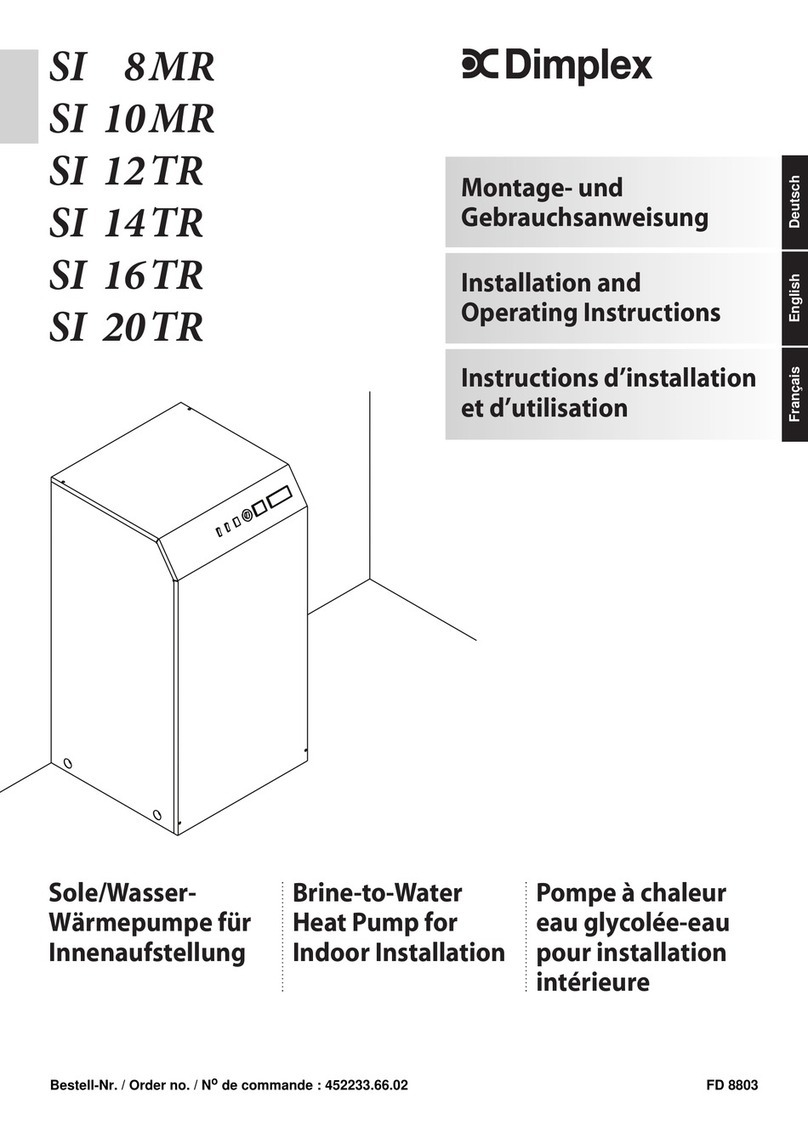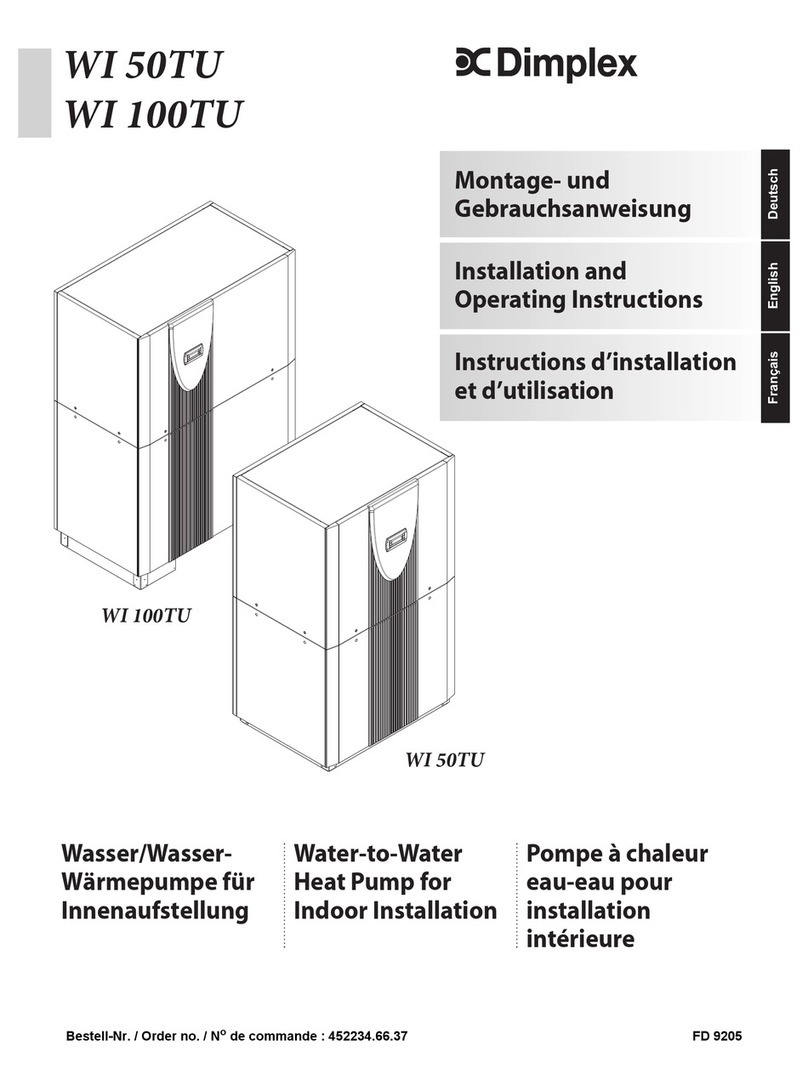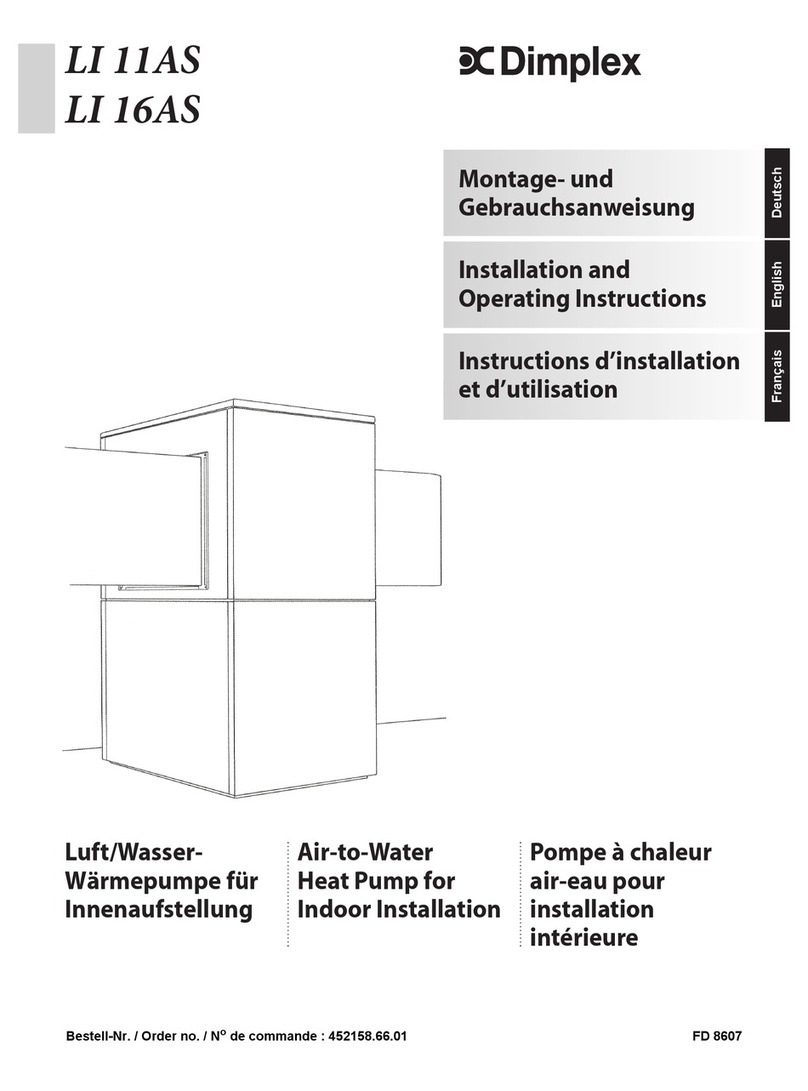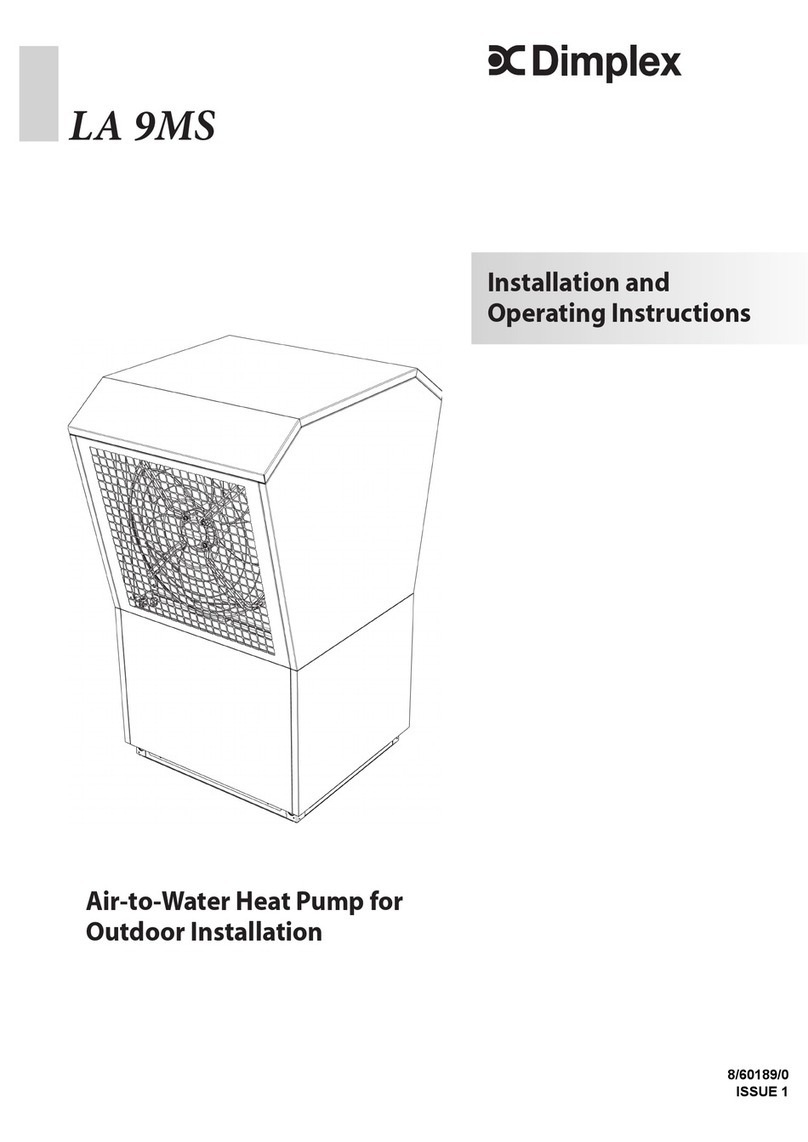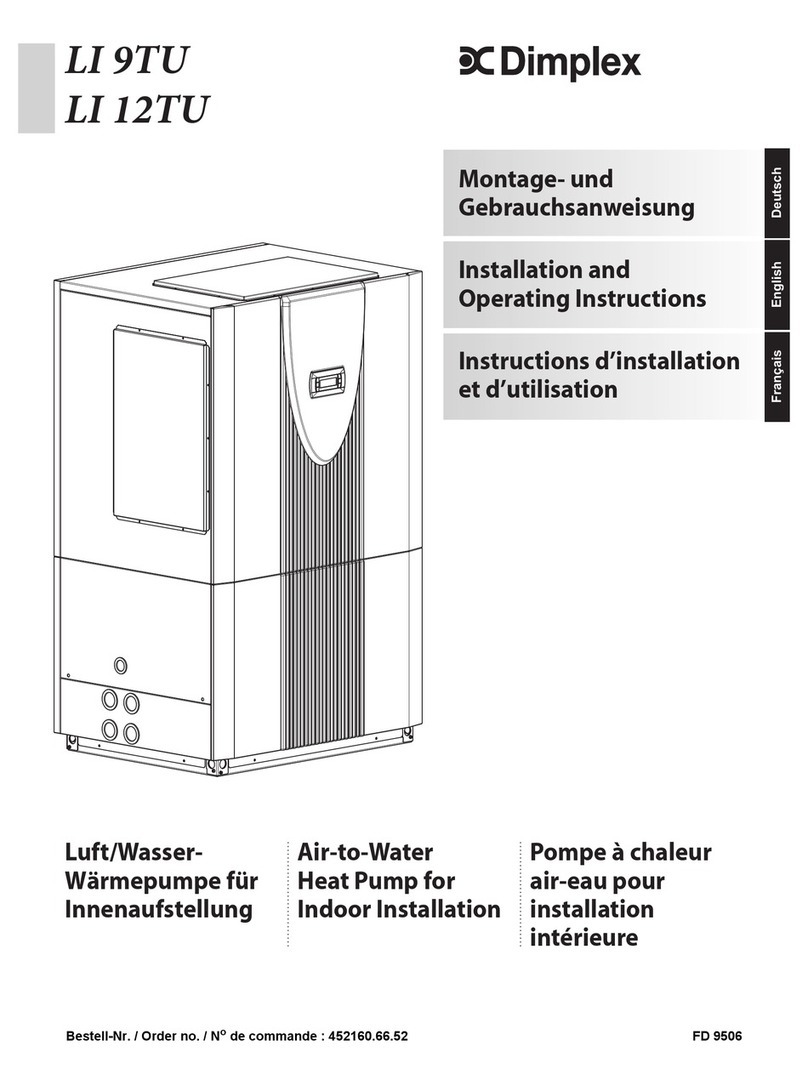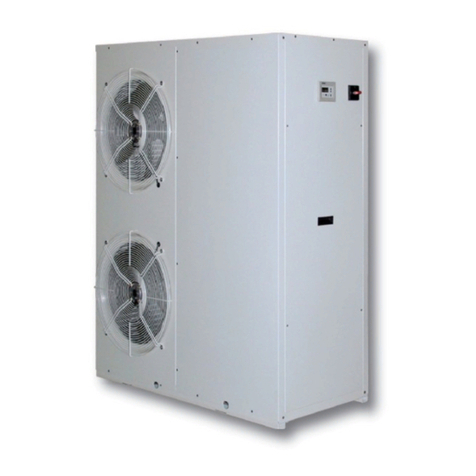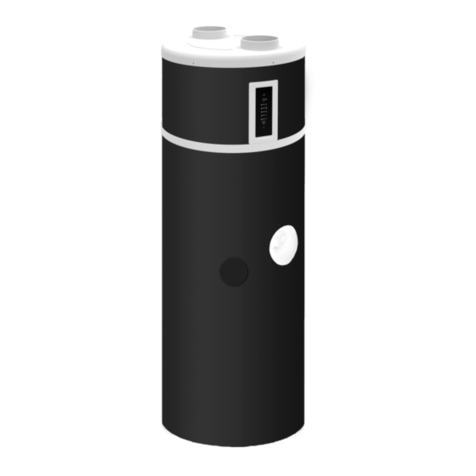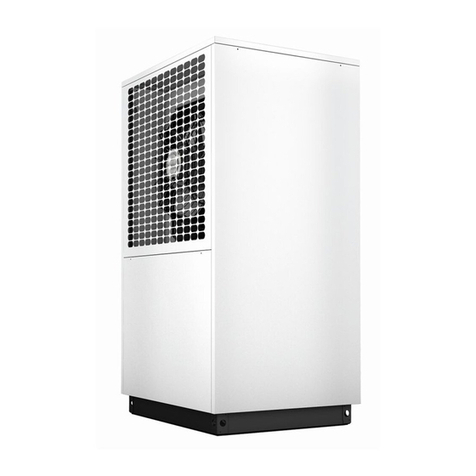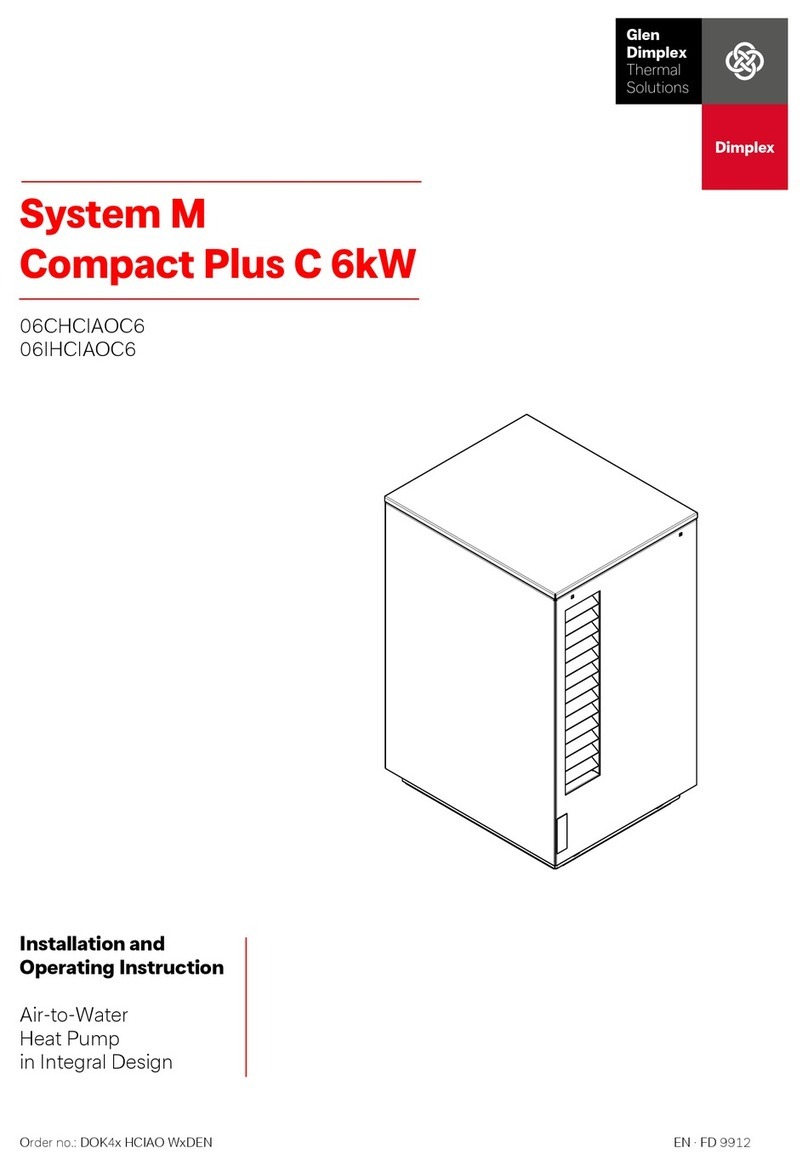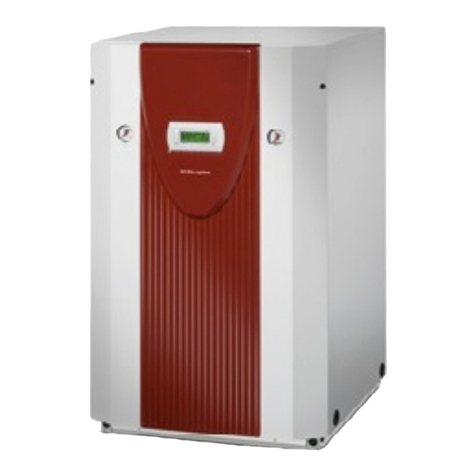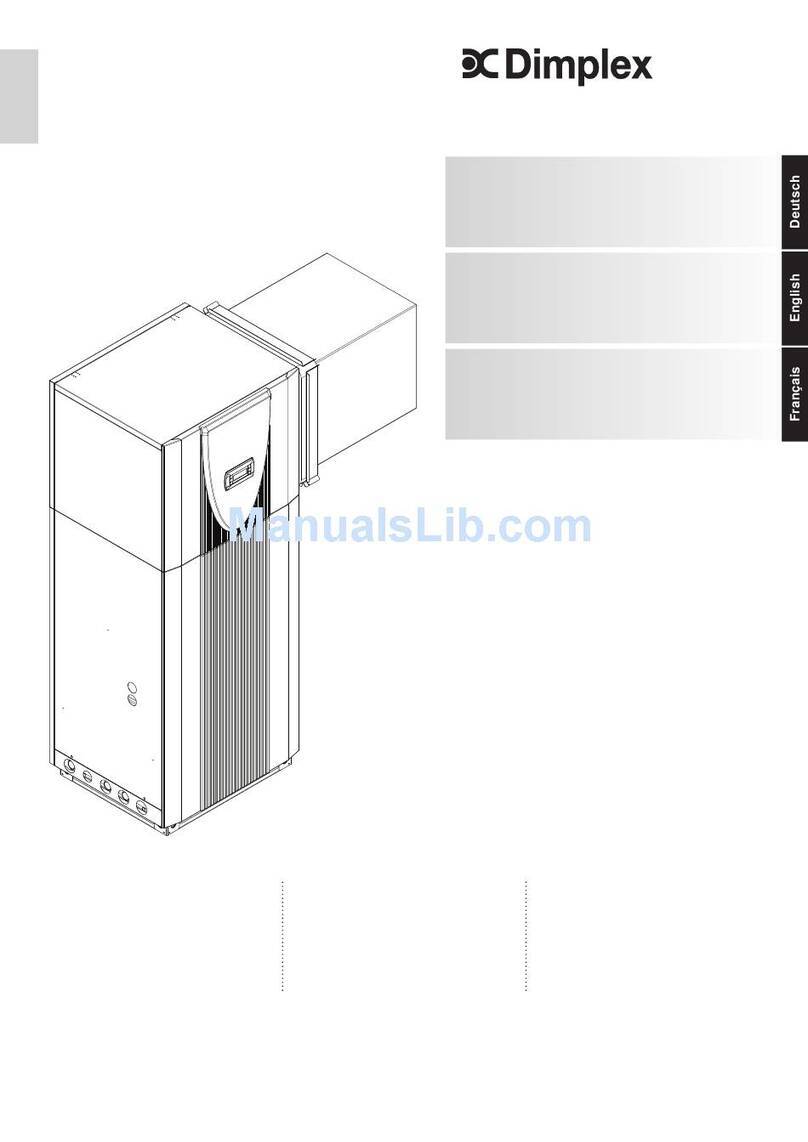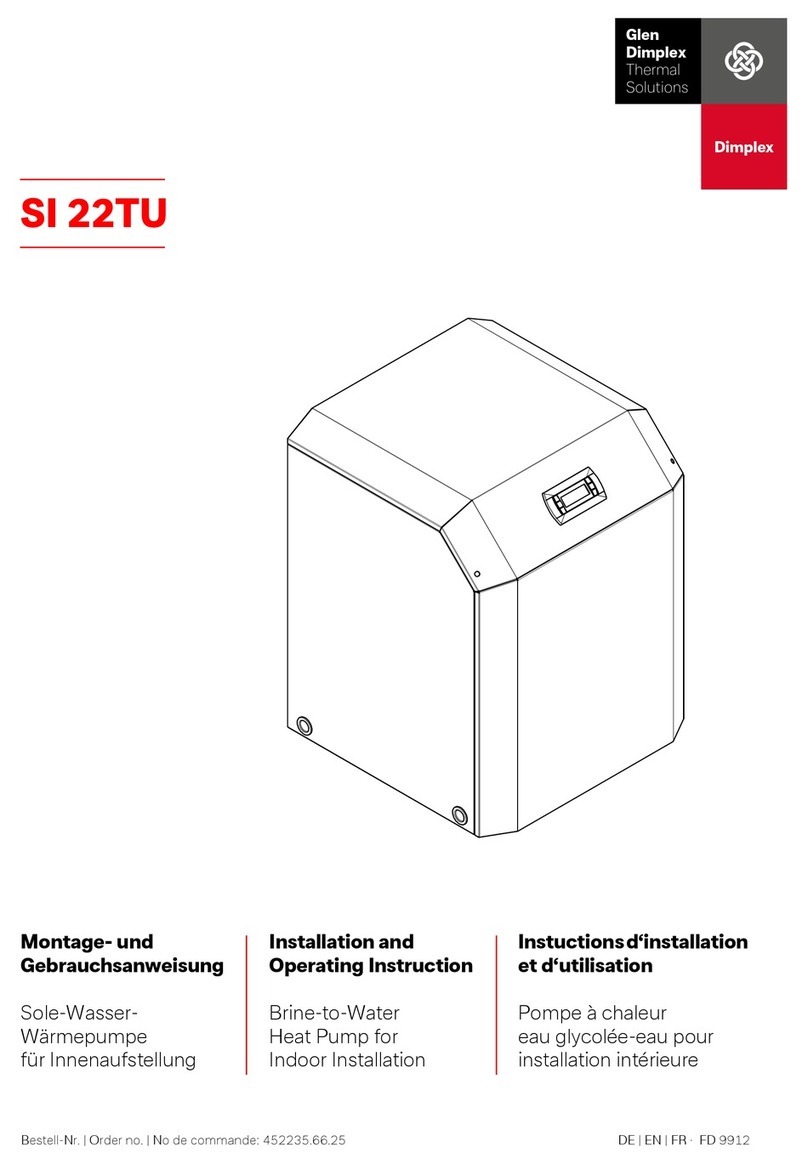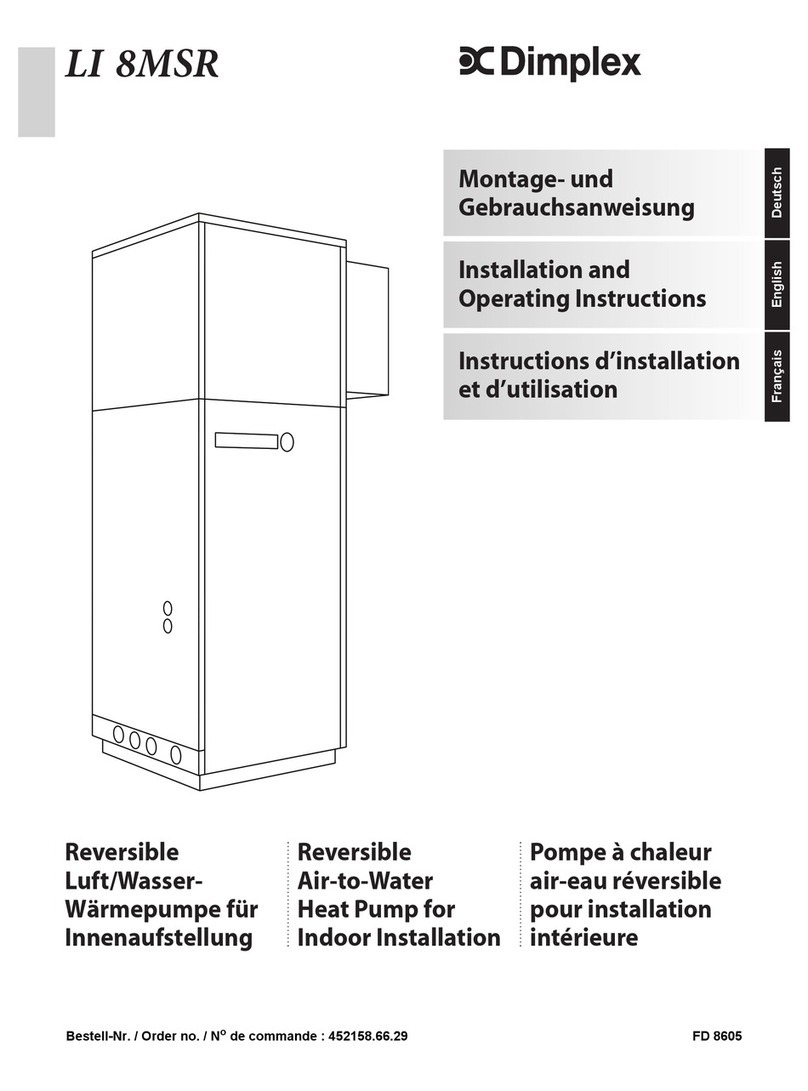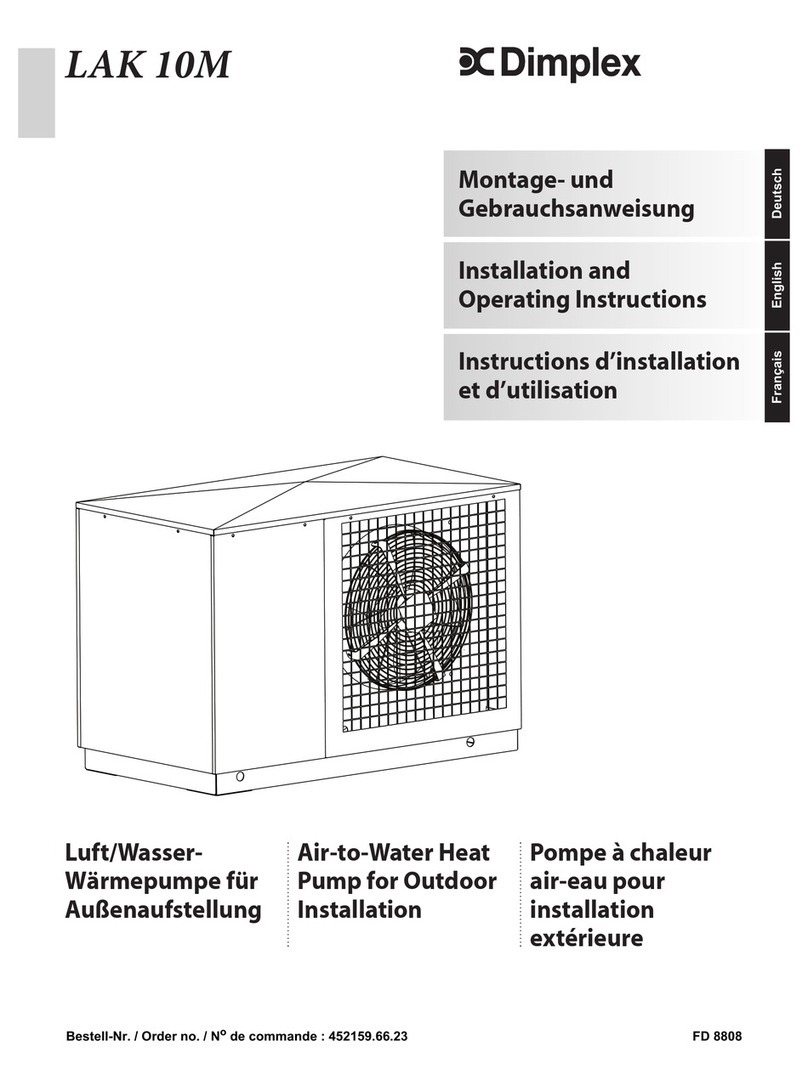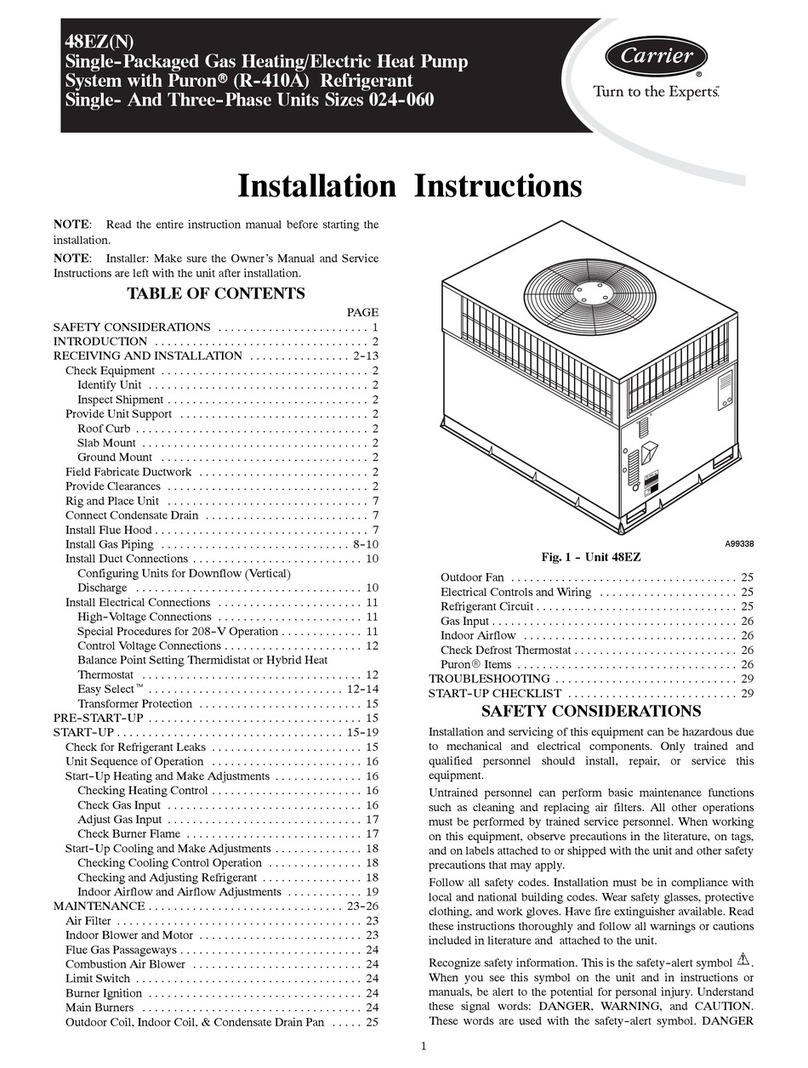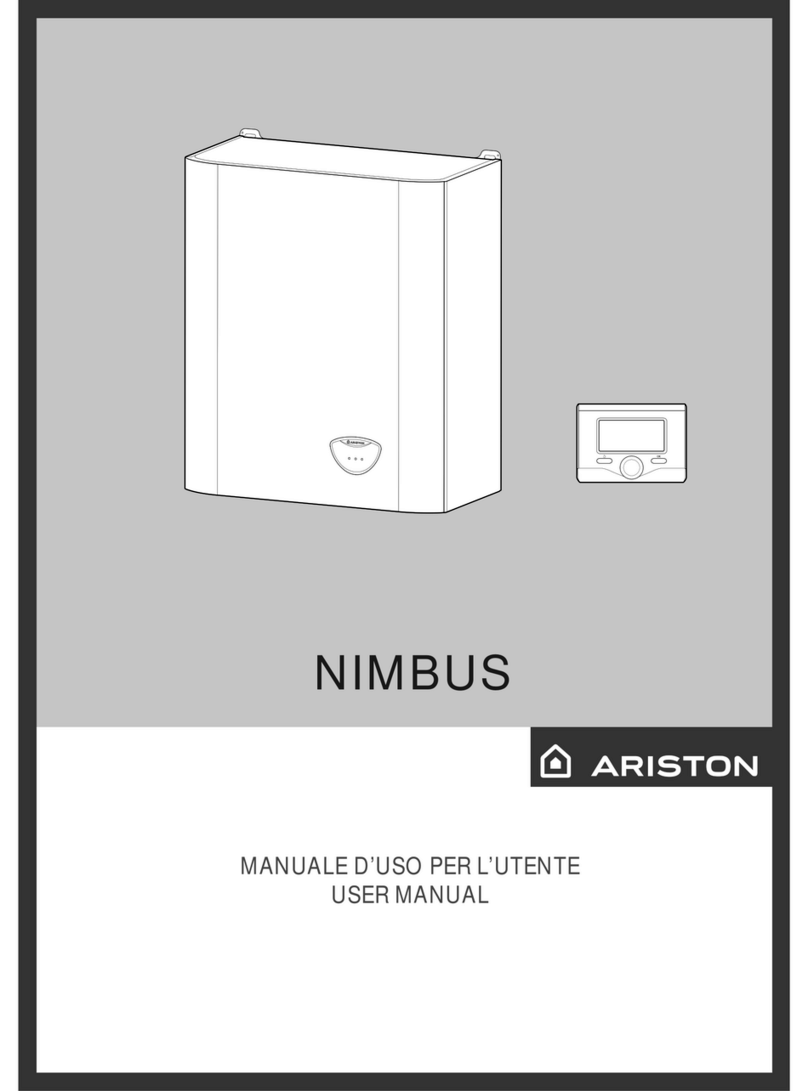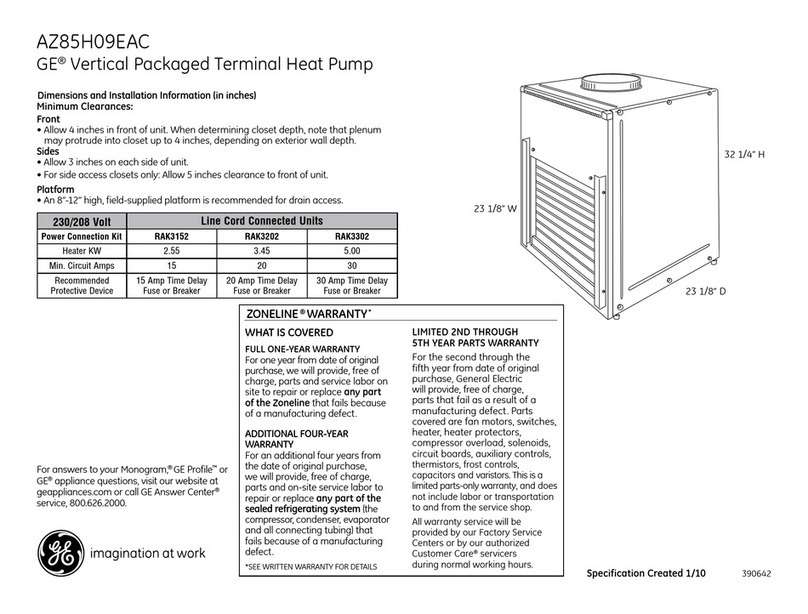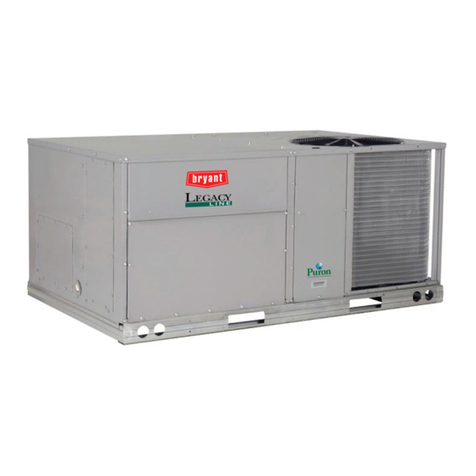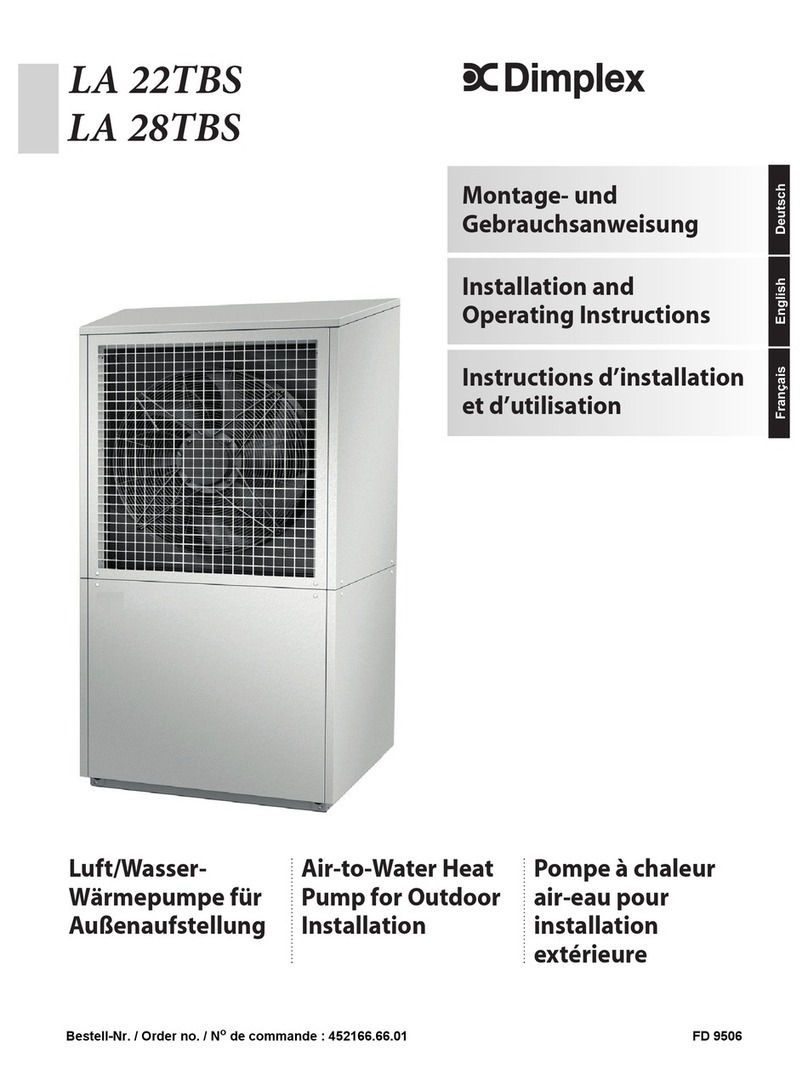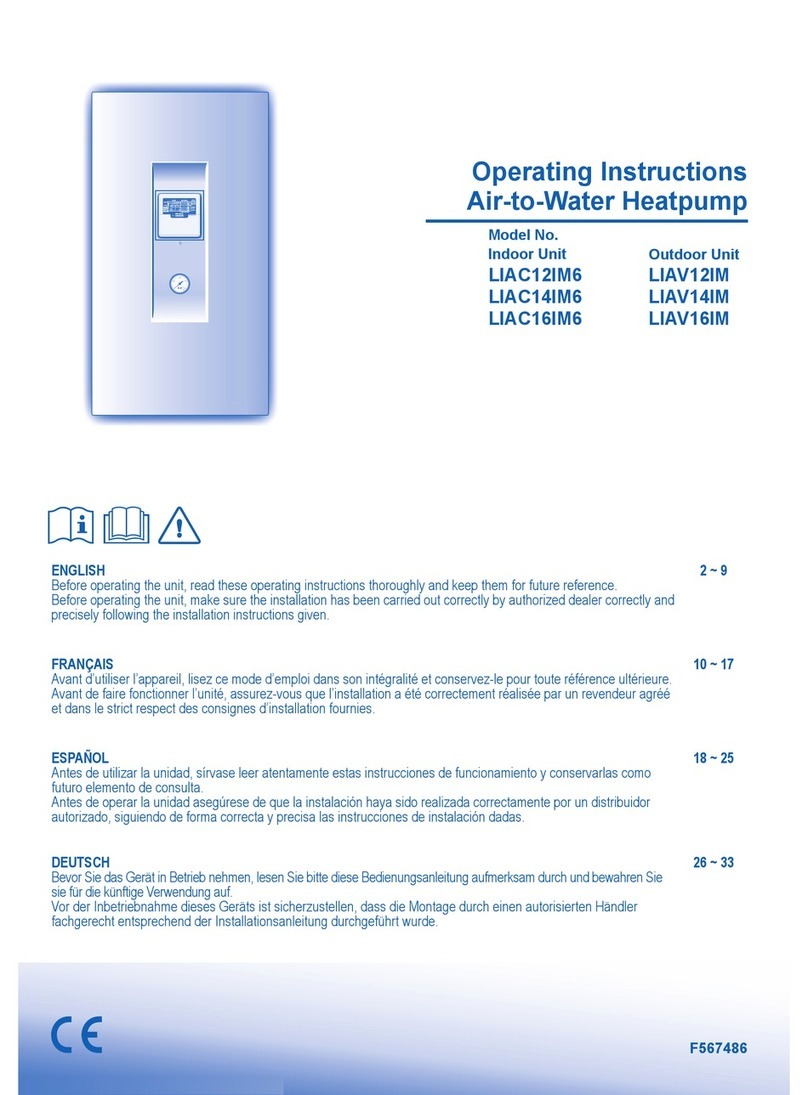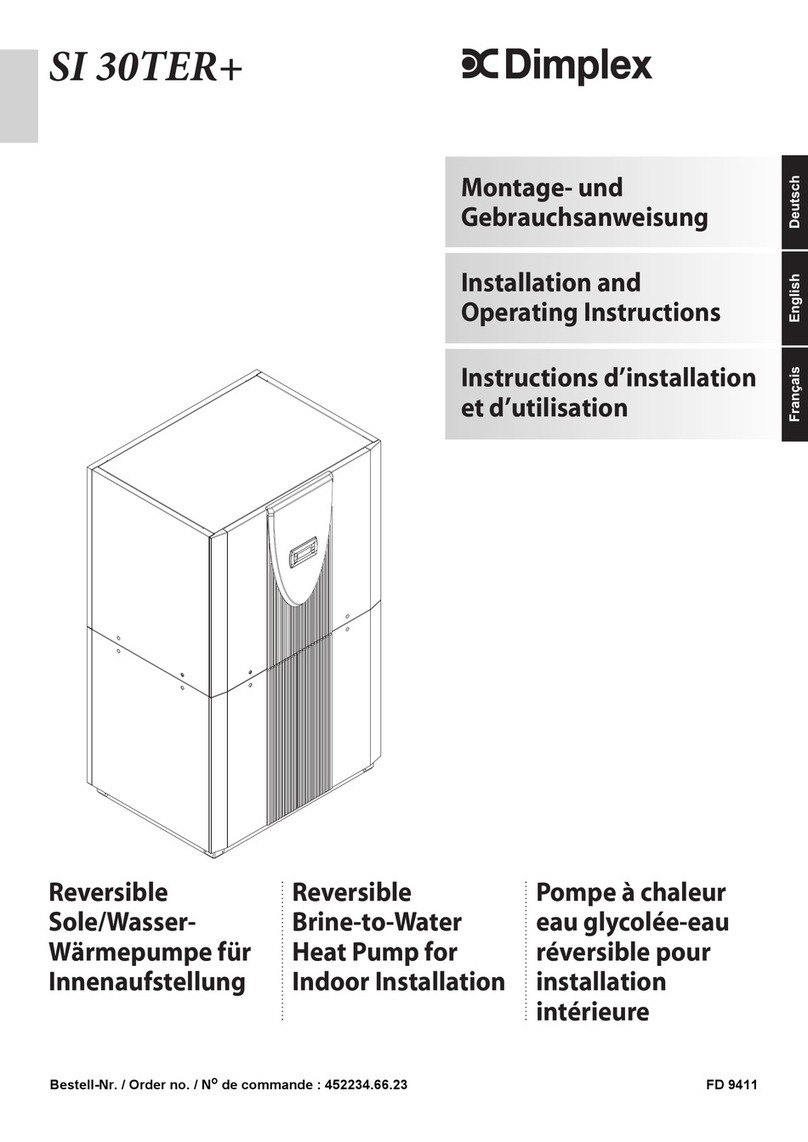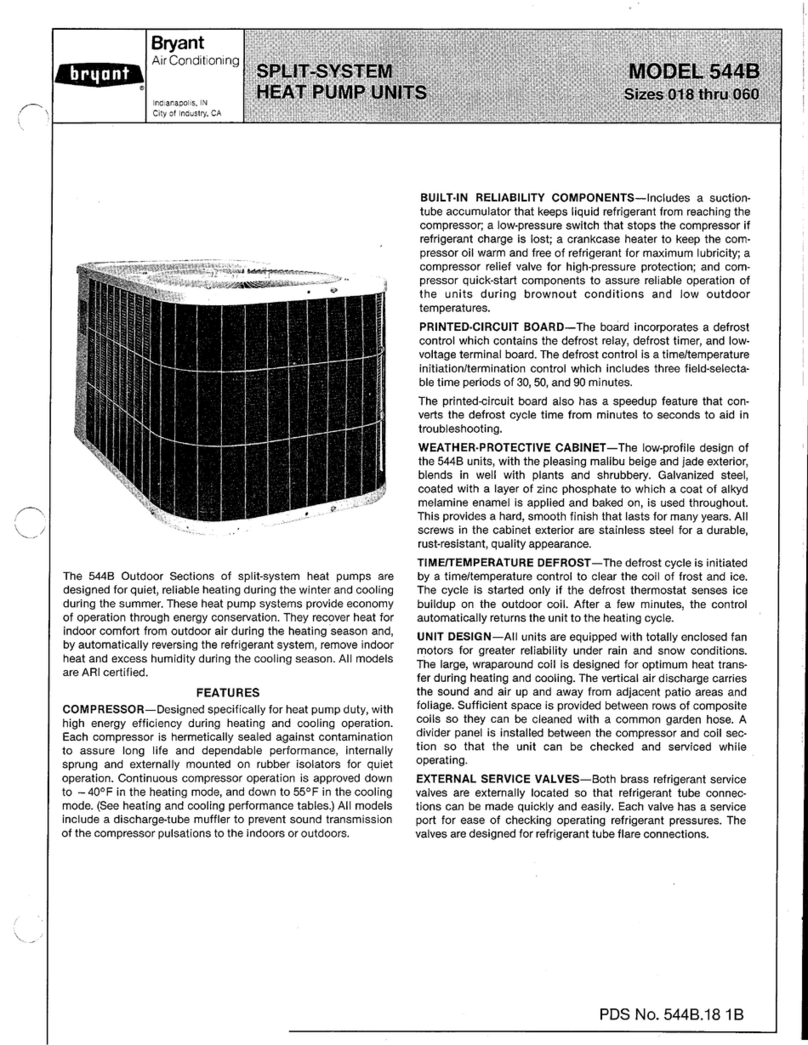
EN-4 452163.66.79-EN · FD 0305 www.dimplex.de
English LA 60S-TUR
1Safetynotes
1.1 Symbols and markings
Particularly important information in these instructions is
marked with CAUTION! and NOTE.
!
Immediate danger to life or danger of severe personal injury or
significant damage to property.
º
Risk of damage to property or minor personal injury or
important information with no further risk of personal injury
or damage to property.
1.2 Intended use
This device is only intended for use as specified by the manu-
facturer. Any other use beyond that intended by the manufac-
turer is prohibited. This requires the user to abide by the rele-
vant project planning documents. Please refrain from
tampering with or altering the device.
1.3 Legal regulations and directives
This heat pump is designed for use in a domestic environment
according to Article 1, Paragraph 2 k) of EU directive 2006/42/
EC (machinery directive) and is thus subject to the require-
ments of EU directive 2014/35/EU (low-voltage directive). It is
thus also intended for use by non-professionals for heating
shops, offices and other similar working environments, in agri-
cultural establishments and in hotels, guest houses and similar
/ other residential buildings.
The construction and design of the heat pump complies with all
relevant EU directives, DIN/VDE regulations (see CE declaration
of conformity).
When connecting the heat pump to the power supply, the rele-
vant VDE, EN and IEC standards are to be adhered to. Any fur-
ther connection requirements stipulated by the network opera-
tor must also be observed.
When connecting the heating system, all applicable regulations
must also be adhered to.
This unit can be used by children aged 8 and over and by per-
sons with limited physical, sensory or mental aptitude or lack of
experience and/or knowledge, providing they are supervised or
have been instructed in the safe use of the unit and understand
the associated potential dangers.
Children must not play with the device. Cleaning and user
maintenance must not be carried out by children without su-
pervision.
!
When operating or maintaining a heat pump, the legal
requirements of the country where the heat pump is operated
apply. Depending on the refrigerant quantity, the heat pump
must be inspected for leaks at regular intervals by a certified
technician, and these inspections must be recorded.
More information can be found in the accompanying log book.
1.4 Energy-efficient use of the heat
pump
By operating this heat pump, you are helping to protect the en-
vironment. A prerequisite for energy-efficient operation is the
correct design of the heat source system and heating system.
It is particularly important for the efficiency of a heat pump to
keep the temperature difference between heating water and
heat source as small as possible. For this reason, it is advisable
to design the heat source and heating system very carefully. A
temperature difference of approx. one Kelvin (one °C) in-
creases the power consumption by around 2.5 %. When de-
signing the heating system, it should be borne in mind that spe-
cial consumers such as e.g. domestic hot water preparation
should also be taken into consideration and dimensioned for
low temperatures. Underfloor heating systems (panel heating)
are optimally suited for heat pump use on account of the low
flow temperatures (30 °C to 40 °C).
It is important to ensure that the heat exchangers are not con-
taminated during operation because this increases the temper-
ature difference, in turn reducing the COP.
Correct adjustment of the heat pump manager is also impor-
tant for energy-efficient use of the heat pump. Further informa-
tion can be found in the operating instructions of the heat
pump manager.
